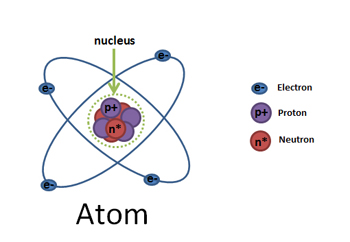Science & Technology
Few-Electron Bubbles in Superfluid Helium Gas
- 14 Jul 2021
- 4 min read
Why in News
Recently, Scientists at the Indian Institute of Science (IISc), Banglore for the first time discovered two species of Few-Electron Bubbles (FEBs) in Superfluid Helium Gas.
Helium
- It is a chemical element with the symbol He and atomic number 2. The British chemist Sir William Ramsay discovered the existence of helium on Earth in 1895.
- It is a colourless, odourless, tasteless, non-toxic, inert, monatomic gas, the first in the noble gas group in the periodic table.
- Its boiling point is the lowest among all the elements.
Electrons
- Matter is made up of atoms, which are the basic units of chemical elements such as hydrogen, helium or oxygen.
- Atoms are made up of three particles: Protons, Neutrons and Electrons.
- Hence, electrons are the subatomic particles that orbit the nucleus of an atom. They are generally negative in charge and are much smaller than the nucleus of the atom.
Key Points
- Electron Bubble:
- An electron bubble is the empty space created around a free electron in a cryogenic gas or liquid, such as neon or helium. They are typically very small, about 2 nm in diameter at atmospheric pressure.
- An electron injected into a superfluid form of helium creates a Single Electron Bubble (SEB) — a cavity that is free of helium atoms and contains only the electron. The shape of the bubble depends on the energy state of the electron.
- For instance, the bubble is spherical when the electron is in the ground state (i.e. state of lowest energy). There are also multiple electron bubbles that contain thousands of electrons.
- Superfluidity is the frictionless flow and other exotic behaviour observed in liquid helium at temperatures near absolute zero (−273.15 °C), and similar frictionless behaviour of electrons in a superconducting solid. In each case the unusual behaviour arises from quantum mechanical effects.
- Few-Electron Bubbles:
- FEBs, on the other hand, are nanometre-sized cavities in liquid helium containing just a handful of free electrons. The number, state, and interactions between free electrons dictate the physical and chemical properties of materials.
- FEBs form an interesting system that has both electron-electron interaction and electron-surface interaction.
- FEBs were found to be stable for at least 15 milliseconds (quantum changes typically happen at much shorter time scales) which would enable researchers to trap and study them.
- FEBs, on the other hand, are nanometre-sized cavities in liquid helium containing just a handful of free electrons. The number, state, and interactions between free electrons dictate the physical and chemical properties of materials.
- Significance:
- Study Properties:
- FEBs can serve as a useful model to study how the energy states of electrons and interactions between them in a material influence its properties.
- Decipher Phenomenons:
- There are several phenomena that FEBs can help scientists decipher, such as:
- Turbulent flows in superfluids and viscous fluids, or the flow of heat in superfluid helium.
- Just like how current flows without resistance in superconducting materials at very low temperatures, superfluid helium also conducts heat efficiently at very low temperatures.
- There are several phenomena that FEBs can help scientists decipher, such as:
- Study Properties:





